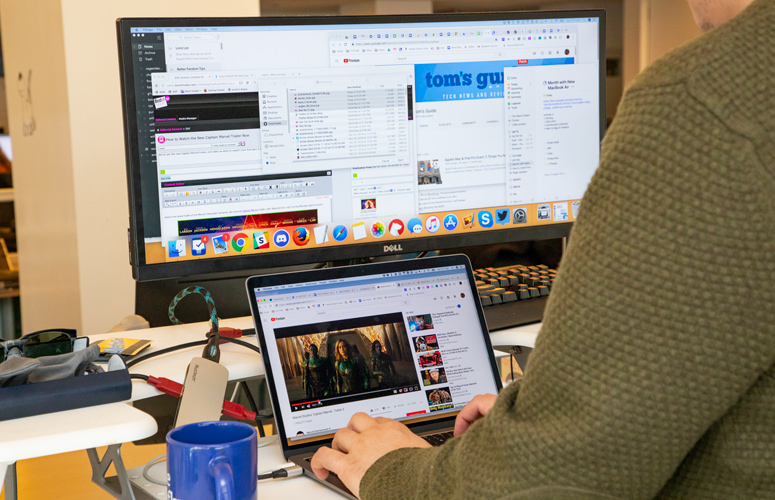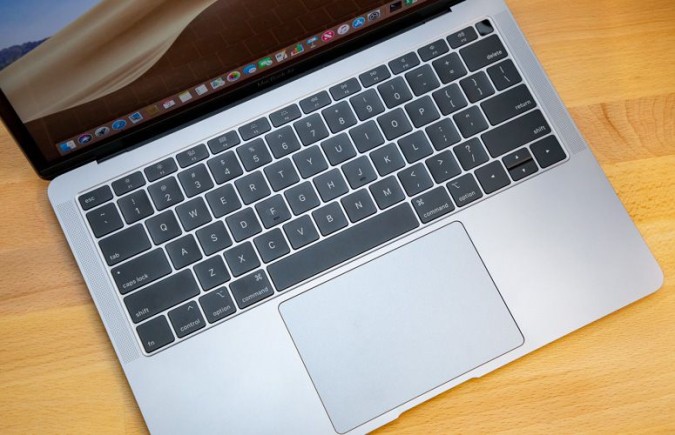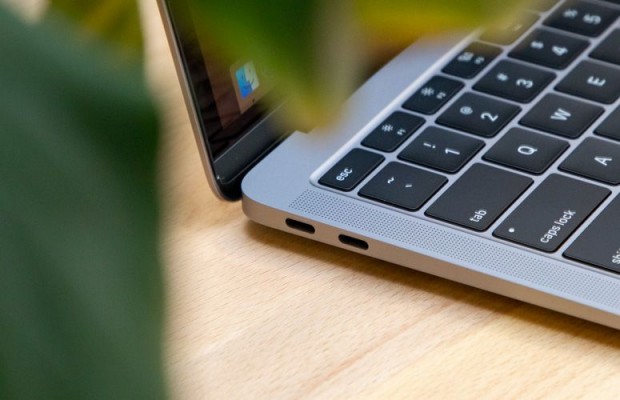My Month with the New MacBook Air: What I Love and Hate
Ever since Apple pushed the MacBook Pro in a direction that didn't work for me — to the Touch Bar and the butterfly switch — I've seen the future of the MacBook Air as key to my own future as a Mac user. So, after I finished giving the new MacBook Air a favorable review (with asterisks), I decided to spend a month with Apple's latest notebook to see if it could become my new go-to machine.
My personal MacBook Pro is aging, and I tried switching to Windows with the MateBook X Pro (it didn't take). Is the 2018 MacBook Air the right machine for me? Here's what I loved and hated after a month with the system.
The keyboard: Not bad at all
One of my biggest concerns about the MacBook Air has been the reliability of its keyboard, something that worries me less today than it did before. As I jammed away on Apple's latest notebook, forcing myself to use my external keyboard as little as possible, I was happy to find little that amplified my concerns.
While I used the Air as my primary computer for the better part of a month, I was most concerned with how it would hold up during Black Friday weekend, which was the biggest stress test I could give the laptop. As I wrote my review of the Google Pixel Slate and pounded out articles about the hottest deals, I eventually forgot my worries about the MacBook Air's keyboard.
My biggest issue with Apple over the past years has been with its notebooks' ultrashallow keys, which never felt right for writing. While my beloved 2012 MacBook Pro's keyboard didn't offer a ton of key travel, clicking them felt natural. The butterfly switch keys, however, made me think of walking on thin ice. And then, the rumors hit of keys failing due to dust, news that was followed by dual class-action lawsuits (1, 2).
The big story about the third-generation MacBook keys doesn't come from Apple, though, but instead from iFixit. That company reported finding a membrane layer under the keys, which was reportedly added to protect the insides of the keyboard from dust and similarly small particles. As someone who's watched in fear as a colleague blew into a 2017 MacBook Pro's keyboard and jammed on a broken key trying to fix it, I had some baggage.
Sign up to receive The Snapshot, a free special dispatch from Laptop Mag, in your inbox.
So, I did the one test I was most worried about. During the Black Friday weekend, when I needed the Air most, I worked on the laptop whilst eating Flamin' Hot Cheetos. And aside from the fact that I don't like the feeling of typing with snack debris on my fingers, I had zero issues, with no keys sticking or failing.
MORE: MacBook Air: Can Apple Stage a Comeback?
By now, at the end of my month with this computer, I've reached a point of cautious approval of the MacBook Air's keys. The keyboard proved reliable enough for me to get a ton of writing done, which — as a writer — is my top priority.
USB Type-C isn't ideal, but it works
I'm willing to accept that the reversible, charging USB Type-C port is the future, but it sure doesn't make me happy about the present. The MacBook Air's dual Thunderbolt 3 Type-C ports are great if you have devices that support those ports, but the machine's lack of those boxy USB Type-A ports made me happy that my laptop backpack has plenty of compartments for various adapters.
Inside that zippered pouch (where I also keep my Lightning-port-to-headphone-jack adapter), I stored my USB Type-C-to-Type-A adapter, which I need to connect to my 10-port USB hub at home.
I'm also lucky that I work at a tech website, because we had a Kingston Nucleum USB Type-C hub handy, which I needed in order to have an HDMI port to plug into my monitor at work. I also needed an adapter for connecting my wireless, USB-based Logitech MX Master mouse.
MORE: USB Type-C FAQ
One major benefit of USB Type-C became clearer the day after my month was over, and I'd handed the MacBook Air over to our lab. I found myself lying in bed, working on my old MacBook Pro, which doesn't use USB Type-C. That MacBook Pro's battery was running low, and I needed to go find its proprietary adapter, and I couldn't just use the Type-C port on my multi-device charger I keep at my bedside, which I also use to charge my iPhone XS Max.
That being said, I do love the older MacBook Air's MagSafe adapter, which attaches magnetically, so tension on the cable doesn't pull the MacBook off a surface.
Performance: Learning limits
As someone who's exclusively used superspeedy MacBook Pros for the last six years, the MacBook Air has taught me a lesson about multitasking. Specifically, I've learned that this machine's Y-series 8th Gen Intel Core i5 processor can't reach the heights I'm used to.
While the MacBook Air held up during the rigors I put it through during my review, I found myself stretching the notebook's limits multiple times at work. The MacBook Air would get sluggish when I kept all my usual apps open. This led to noticeable slowdown when I had 50+ Chrome tabs, Firefox, Pixelmator, Mail, Slack, Photos, Discord, iTunes and TweetDeck all running. I also often heard the fans speed up to an audible whir, as I used the new Air connected to an external display.
Those issues weren't crippling, but they were annoying on a laptop that costs $1,399. Of course, I didn't always find myself stretching the Air to the limit. The laptop ran fine while I hammered out articles without an external display connected or played the amazingly retro-looking mystery game Return of the Obra Dinn.
MORE: The New MacBook Air Is Great, But There's One Glaring Flaw
Every time I closed a window to regain a bit of performance speed, I thought of how I didn't encounter such issues on the 15-inch 2017 MacBook Pro that I'd been using at work. I prefer the lower price of the new MacBook Air (starting at $1,199). But this month with the Air showed me that the extra investment you make in the 2018 MacBook Pros (starting at $1,799) is worth it for power users.
Not the MacBook I'm excited about, but maybe ...
One month in, I'm much more optimistic about recommending the MacBook Air to the family friends and random strangers who have asked me about the Air over the last year or so. So, to those with modest needs: Yeah, the MacBook Air is a solid computer and definitely one you can trust (provided you check out its shallow keys in person first).
At the same time, do you run all of the apps all the time? Do you never close tabs, because you need each and every one? If so, you might have to spend a little more and get a MacBook Pro, or maybe think about getting a Windows 10 laptop, which would offer a bit more value. That said, if you're tied to macOS, the new Air holds up as the best MacBook for most people.
Credit: Laptop Mag
Henry was a contributing writer at Laptop Mag. He penned hundreds of articles, including helpful how-tos for Windows, Mac, and Gmail. Henry has also written about some of the best Chromebooks, and he has reviewed many Apple devices, including various MacBook Air laptops. He is now a managing editor at our sister site Tom's Guide, covering streaming media, laptops, and all things Apple.






